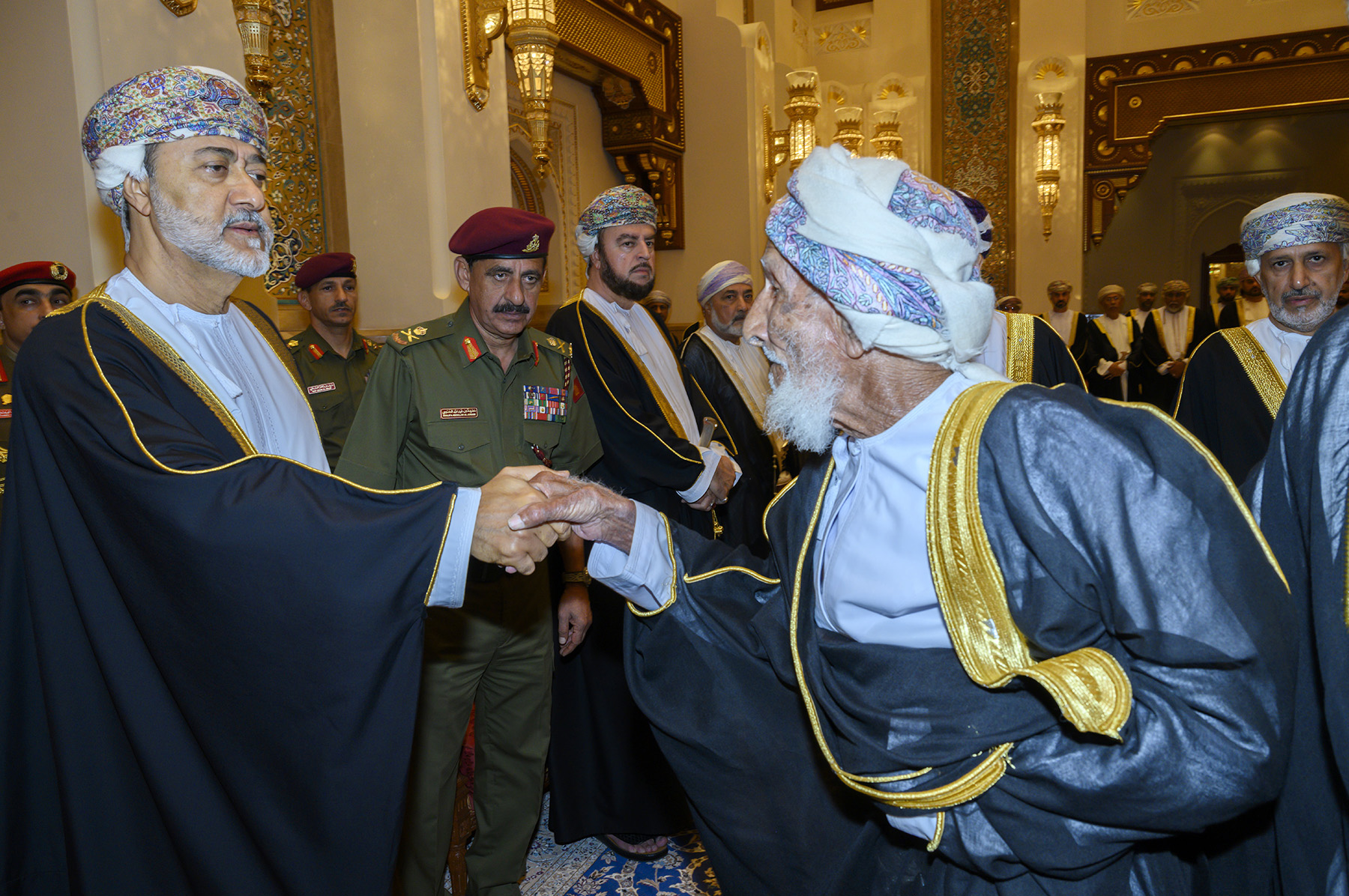

Muscat: In his late 90s, Shaikh Shihab bin Hamoud bin Rashid al Balushi from Ibri has become a social media sensation in Oman. Born around the mid-1920s, Shaikh Shihab met and shook hands with four Sultans in his lifetime; Sultan Taimour, Sultan Said, Sultan Qaboos and His Majesty Sultan Haitham bin Tarik.
What the twitter community in the country would like now is for Shaikh Shihab to narrate the stories of all these years. Wishes continued to pour in for Shaikh Shihab for good health and long life. While the social media community continued the calculations of the years, Shaikh Shihab had already greeted His Majesty Sultan Haitham at Al Alam Palace during the three days of official mourning when citizens were received.
A tweet posted by Abdullah Mubarak al Abry who had taught two of Shaikh Shihab’s grandsons at College of Law at Sultan Qaboos University confirmed the details and his tweet were retweeted many times. A story that went viral thanks to the social media of the millennium. But there are stories that are also waiting to be told from across the nation.




From Fanja, Bidbid, Al Dakhiliyah a grandmother, Shaikha Saud al Aamri, recollects the days of transformation explaining about how the life in Oman used to be like before Sultan Qaboos’ reign. She described that life was much harder and less facilitated than now. “People used mules for transportation to get their daily needs of water and food for them and their children. There were no cars but only few huge ones (land rovers) to take a larger number of people, who had to wait in valleys, to travel to Muscat. Those who needed medical care and could afford it used to go to the only hospital located in Muttrah either for child delivery or for treating the elderly,” Shaika explained.
According to her words, “Being a farmer (Bedar) was the most common job among Omanis then because they depended on their own crops after planting, watering and harvesting them. They also used to save some water during the process.” Shaika Saud added, “Women had a hard time getting water from faraway places -more than 30 minutes walking- for that they had to carry it on huge metallic water vessels called (Handua) on their heads.
Not only that, but they also had to carry more water in other metallic vessels called (Baldi or Valdi) so they took the portion needed for their families’ needs. They used the water in cooking and washing clothes in huge vessels called (Jana).” Emphasizing on the difficulty in obtaining potable water grandmother Shaika elaborated, “Before machines came, people used to draw water from wells (Bedi) using an old traditional mechanism (Zagirah) with ropes and pulleys.”
Thanking Sultan Qaboos, Shaika al Aamri said, “After Sultan Qaboos had taken the lead, people ‘started living in heaven’. We should thank him and pray for him even when he is not with us.”
Just before 1970 Salim from Khabourah, had moved toward Suwaiq, North Batinah practicing agriculture. By early 1970s he went on to Dhofar Governorate. From there he travelled to Abu Dhabi for job opportunities and returned to his homeland to work and settle. “There were no companies to look for job in the past. His Majesty Sultan Qaboos made everything from nothing,” he said.
In these days of sentiments, there is a person in Salalah who is reminiscing a special day from his childhood. From Raysut, Mohsin Omar Samhan al Kathiri, a child himself accompanied his mother and younger brother on camel to the spring Ain Jarzeez after being informed young Sultan Qaboos was coming there.
The grandfather in his 80s today recollected, “Young Sultan Qaboos was just five years old and had come to spend the whole day there. My younger brother was the same age and they wrestled and we played throughout the day. We had lunch together and at the end of the day we went back home.” That day is still etched on his mind so while the nation and the world reflects on the political legacy of His Majesty Sultan Qaboos as the developer of Oman into a modern nation, Mohsin Omar remembers the young child who played endlessly and energetically not knowing of the responsibility he would undertake in the future to spear head a nation to the millennium that would move from achieving basic necessities to nationwide infrastructure that would see airports and ports that are crucial to the trade of the world. The child who became the Sultan of Peace urged nations to conduct dialogues to enhance understanding instead of increasing differences.
Oman Observer is now on the WhatsApp channel. Click here



